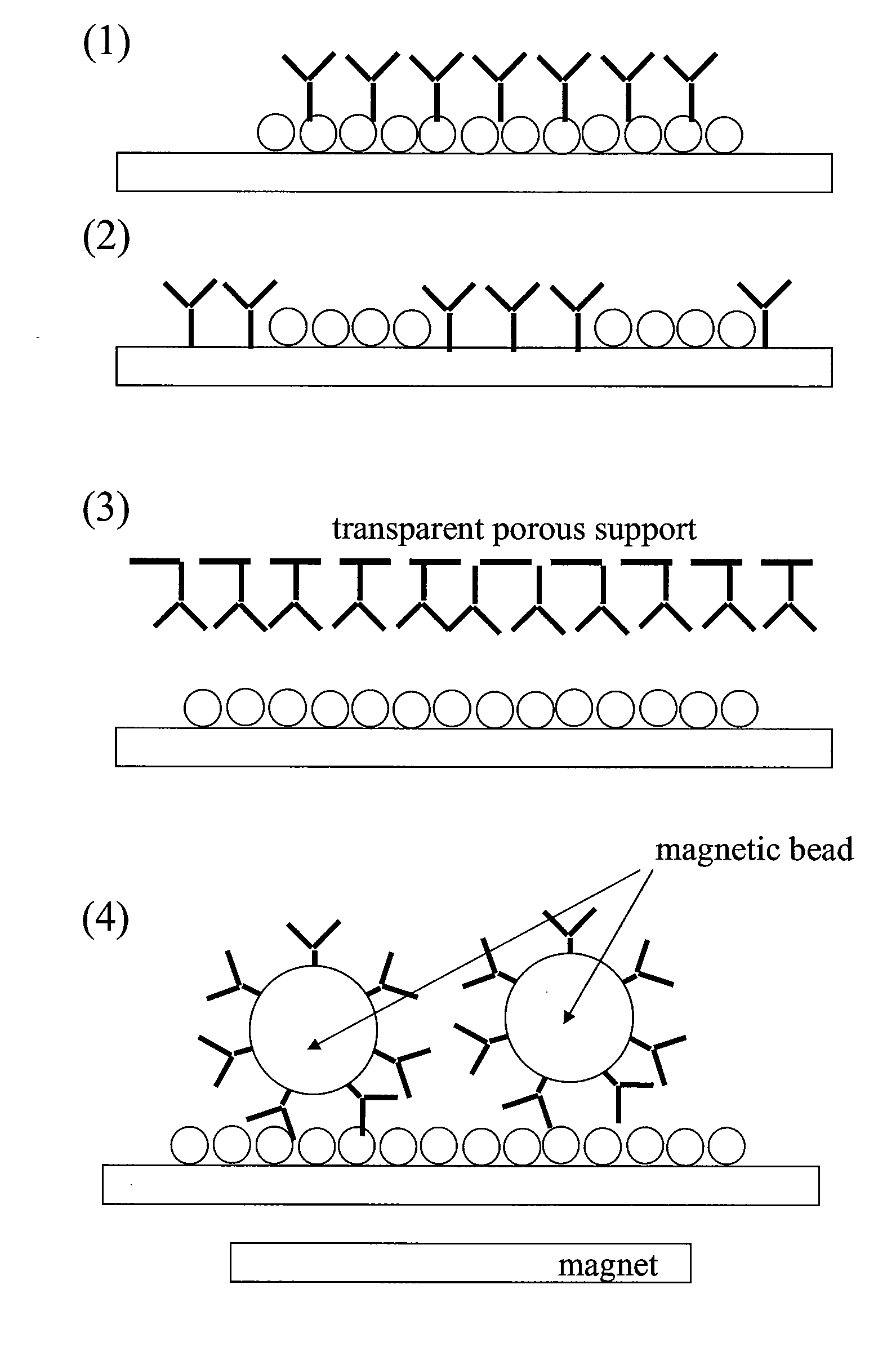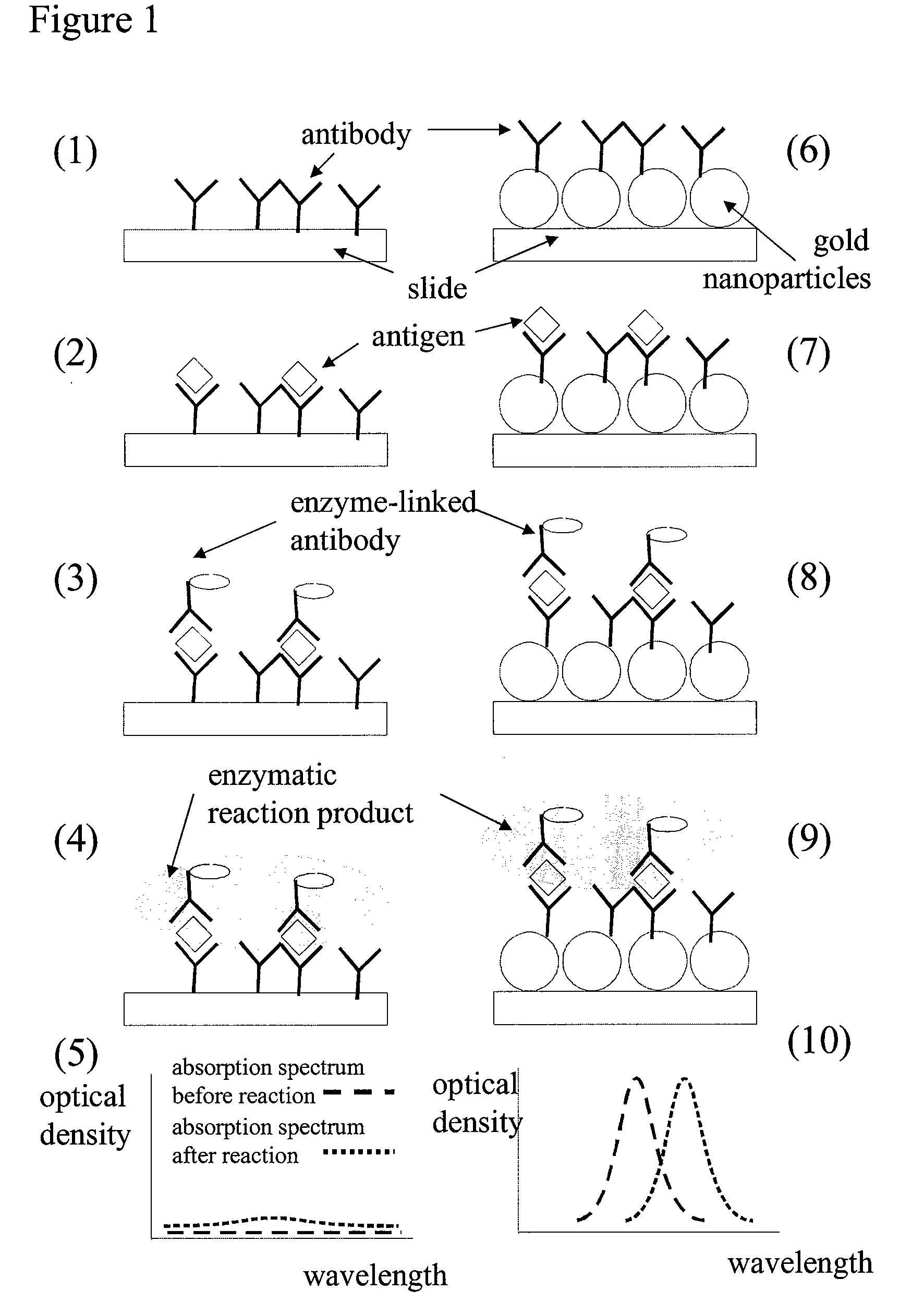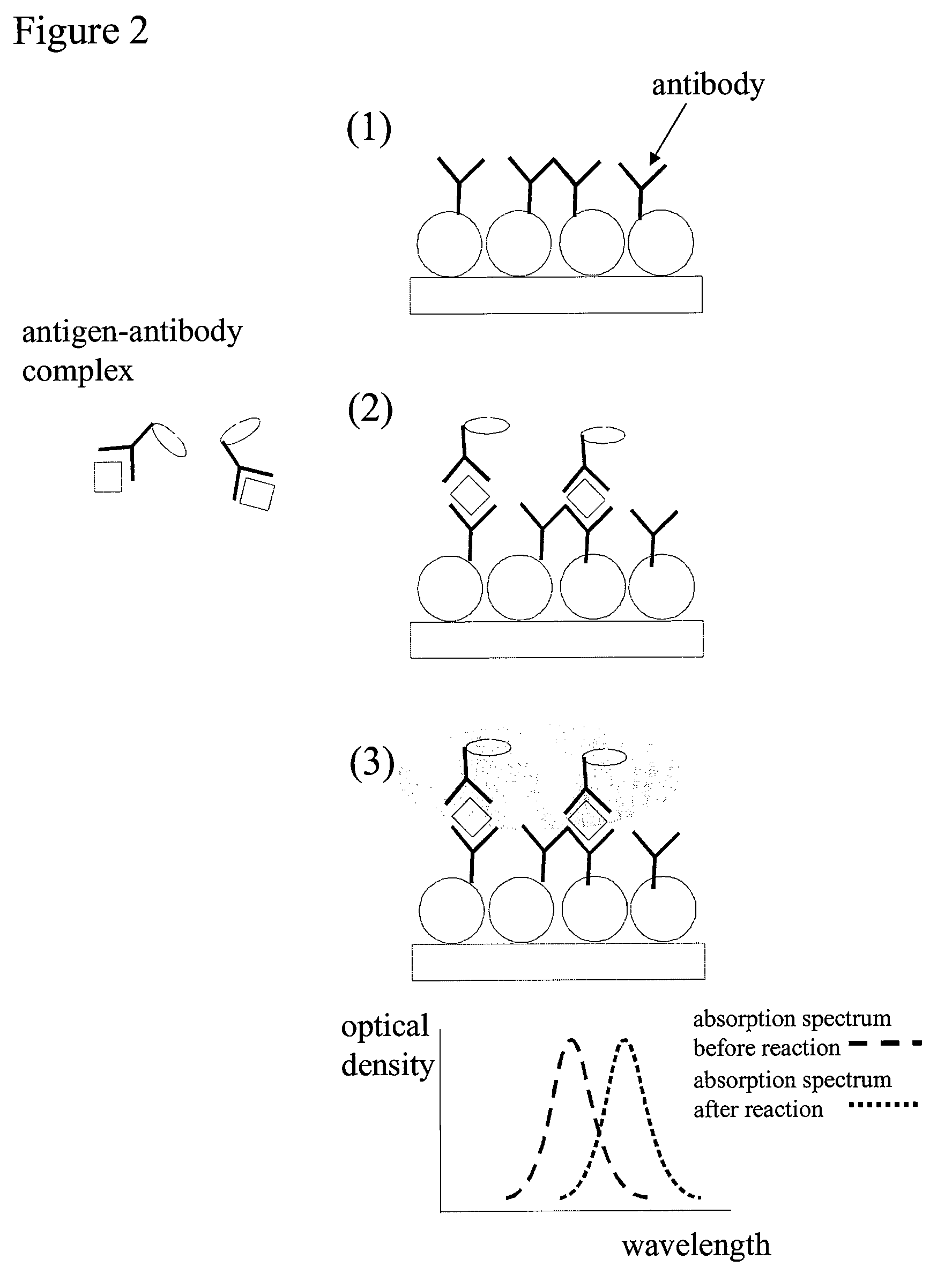Enzymatic assay for lspr
a technology of enzyme assay and assay, applied in the field of colorimetric assay, can solve the problems of limiting the amount of antibody that can be attached to a solid surface, dictating the detection limit, and not much room left for accelerating the enzymatic reaction
- Summary
- Abstract
- Description
- Claims
- Application Information
AI Technical Summary
Benefits of technology
Problems solved by technology
Method used
Image
Examples
example 1
Detecting changes in Refractive Index at an LSPR Surface
[0077]The protocol for an immunoassay on a LSPR surface proceeds according to various steps that are described here after.
Step 1. Immobilization of the Capturing Antibody:
[0078]An LSPR supporting surface was first prepared using methods known in the art, including depositing gold on a glass substrate, followed by forming a monolayer of polystyrene beads on the gold coated glass substrate, and then depositing another layer of gold across the whole surface. The gold coated surface is then modified with a self-assembled monolayer (SAM) having a mixture of hydroxyl-alkanethiol and carboxyl-alkanethiol in a 9:1 ratio.
[0079]The SAM-functionalized LSPR supporting surface was washed with 0.05% Tween20 in water. It was then rinsed with ddH2O and dried. The carboxylic groups of the LSPR supporting surface were activated with a solution of (100 mM NHS+400 mM EDC in 0.1 M MES buffer) for 15 to 30 minutes, as described in, i.e., Greg T. Her...
PUM
| Property | Measurement | Unit |
|---|---|---|
| size | aaaaa | aaaaa |
| optical densities | aaaaa | aaaaa |
| optical densities | aaaaa | aaaaa |
Abstract
Description
Claims
Application Information
 Login to View More
Login to View More - R&D
- Intellectual Property
- Life Sciences
- Materials
- Tech Scout
- Unparalleled Data Quality
- Higher Quality Content
- 60% Fewer Hallucinations
Browse by: Latest US Patents, China's latest patents, Technical Efficacy Thesaurus, Application Domain, Technology Topic, Popular Technical Reports.
© 2025 PatSnap. All rights reserved.Legal|Privacy policy|Modern Slavery Act Transparency Statement|Sitemap|About US| Contact US: help@patsnap.com



